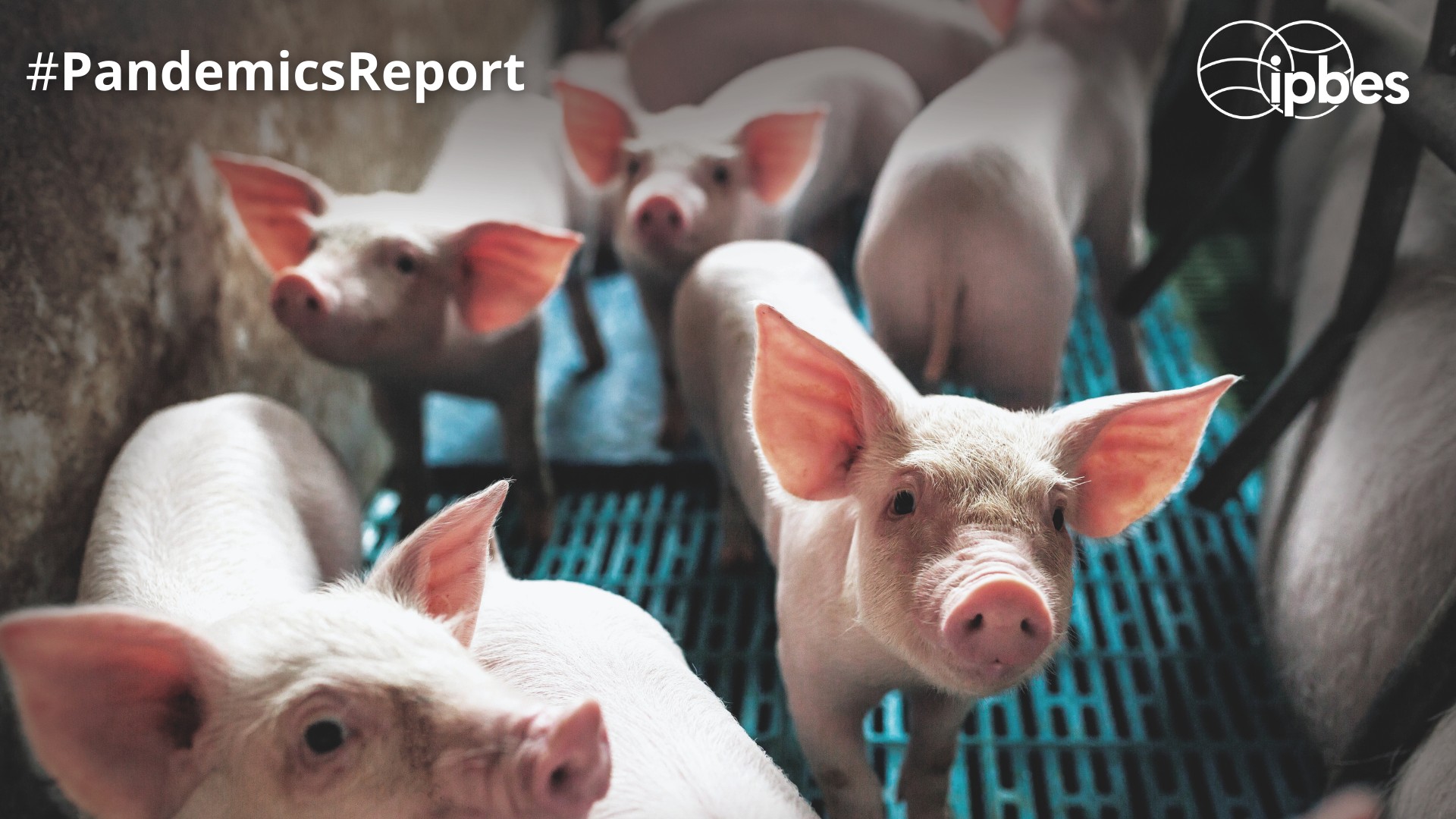 IPBES
IPBES
IPBES Pandemics Report: Escaping the 'Era of Pandemics'
Watch the live report launch on 29 October at 10am EST
An urgent virtual workshop about the links between degradation of nature and increasing pandemic risks was convened by the Intergovernmental Science-Policy Platform on Biodiversity and Ecosystem Services (IPBES). The workshop resulted in the development of a major new report on biodiversity and pandemics which suggests that addressing disruptive human activities and unsustainable consumption and increasing biodiversity conservation are some of the changes needed to proactively deal with infectious diseases. The experts agree that:
- unsustainable exploitation of the environment has led to almost all pandemics, and
- escaping the era of pandemics is possible, but that this will require a seismic shift in approach from reaction to prevention.
COVID-19 is said to be the sixth global health pandemic since the Great Influenza Pandemic of 1918. Although it has its origins in microbes carried by animals, like all pandemics its emergence has been entirely driven by human activities. It is estimated that another 1.7 million currently ‘undiscovered’ viruses exist in mammals and birds – of which up to 850,000 could have the ability to infect people.
The report says that relying on responses to diseases after their emergence, such as public health measures and technological solutions, in particular the rapid design and distribution of new vaccines and therapeutics, is a “slow and uncertain path”, underscoring both the widespread human suffering and the tens of billions of dollars in annual economic damage to the global economy of reacting to pandemics.
“It is very clear that we must do better to prevent the emergence of infectious diseases rather than reacting to them once they are already here. Reducing present and future pandemic risks can only be effective, and transformative, if we address the common drivers of biodiversity loss and ill health” said Elizabeth Maruma Mrema, Executive Secretary, Convention on Biological Diversity.
Conclusions reached in the report support the conclusions and recommendations put forth in the recently released fifth edition of the Global Biodiversity Outlook (GBO-5). The GBO-5 outlines eight major transitions needed to slow, then halt nature’s accelerating decline.
The IPBES report supports the lessons learned over the last decade of implementing the Strategic Plan for Biodiversity 2011-2020 and provides directions for the way forward in developing the post-2020 global biodiversity framework, to be agreed in 2021.
More information:
Policy options that would help to reduce and address pandemic risk
Launching a high-level intergovernmental council on pandemic prevention to provide decision-makers with the best science and evidence on emerging diseases; predict high-risk areas; evaluate the economic impact of potential pandemics and to highlight research gaps. Such a council could also coordinate the design of a global monitoring framework.
Countries setting mutually-agreed goals or targets within the framework of an international accord or agreement – with clear benefits for people, animals and the environment.
Institutionalizing the ‘One Health’ approach in national governments to build pandemic preparedness, enhance pandemic prevention programs, and to investigate and control outbreaks across sectors.
Developing and incorporating pandemic and emerging disease risk health impact assessments in major development and land-use projects, while reforming financial aid for land-use so that benefits and risks to biodiversity and health are recognized and explicitly targeted.
Ensuring that the economic cost of pandemics is factored into consumption, production, and government policies and budgets.
Enabling changes to reduce the types of consumption, globalized agricultural expansion and trade that have led to pandemics – this could include taxes or levies on meat consumption, livestock production and other forms of high pandemic-risk activities.
Reducing zoonotic disease risks in the international wildlife trade through a new intergovernmental ‘health and trade’ partnership; reducing or removing high disease-risk species in the wildlife trade; enhancing law enforcement in all aspects of the illegal wildlife trade and improving community education in disease hotspots about the health risks of wildlife trade.
Valuing Indigenous Peoples and local communities’ engagement and knowledge in pandemic prevention programs, achieving greater food security, and reducing consumption of wildlife.
Closing critical knowledge gaps such as those about key risk behaviors, the relative importance of illegal, unregulated, and the legal and regulated wildlife trade in disease risk, and improving understanding of the relationship between ecosystem degradation and restoration, landscape structure and the risk of disease emergence.